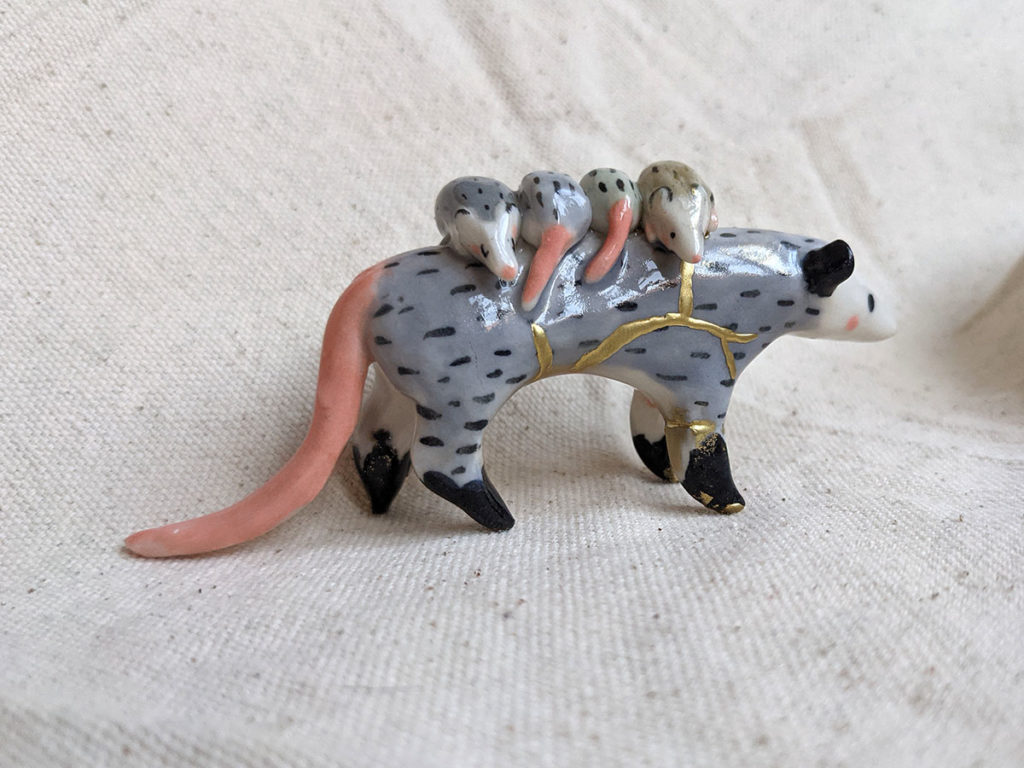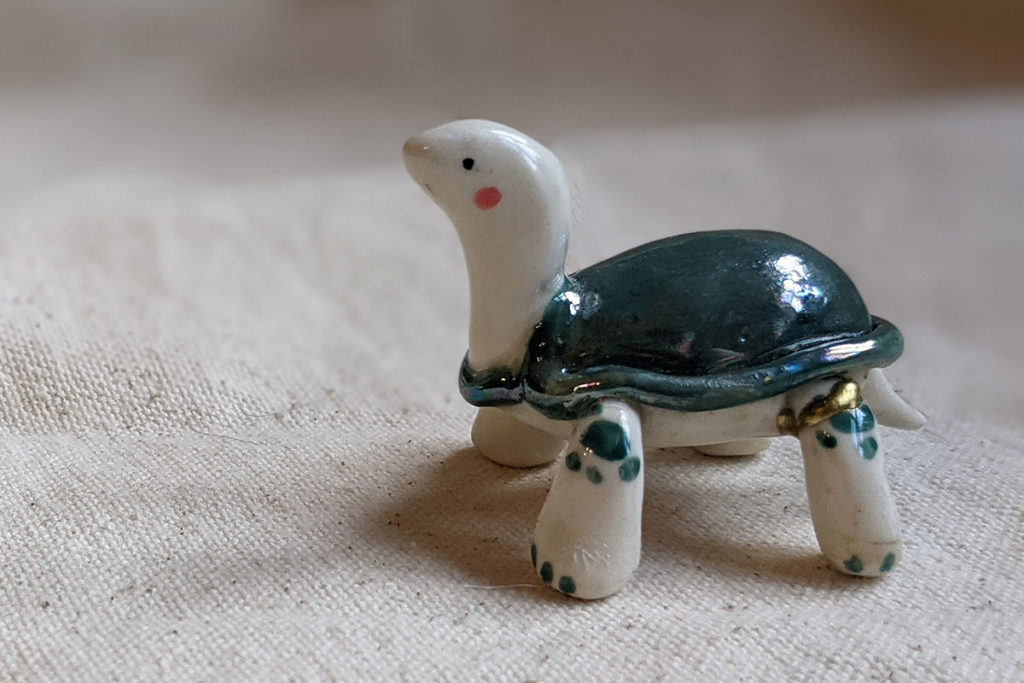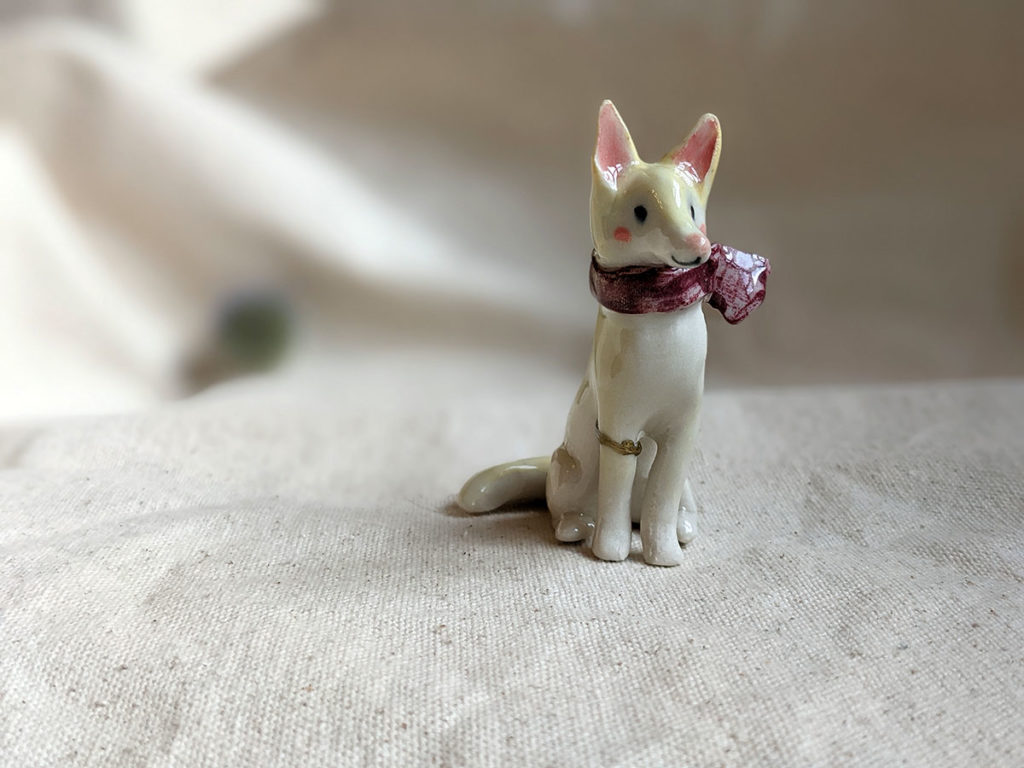Ceramics blog
How to repair porcelain figurines
While making and working ceramic animals, I sometimes find myself needing to repair porcelain figurines. They either broke while I transported them, they sometimes cracked in the kiln or had an accident while glazing. The result is always the same : either throw it away or repair the porcelain figurine. As most of us, I hate to throw things away so I’ll show you how to repair porcelain figurines.
These repaired figurines are adoptable for a reduced price on my Ko-Fi page.
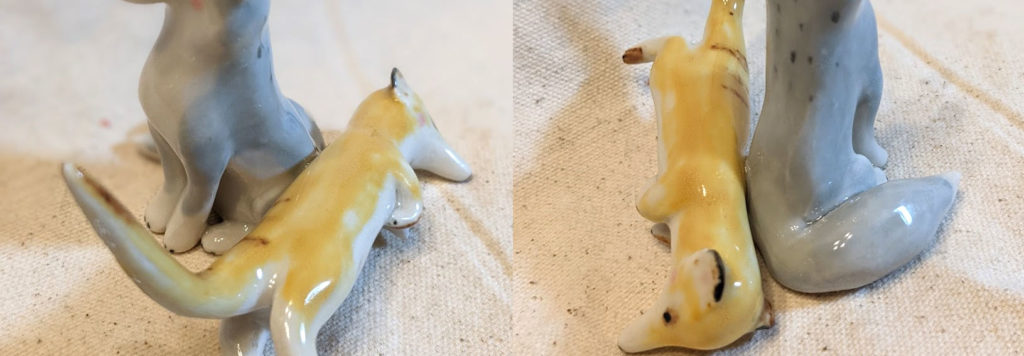
Step 1 : assess the damage
The first step to repairing is accurately assessing the damage. Some pieces are broken beyond any hope so it’s a good thing to know what you’ll be dealing with. What’s repairable : clean cuts, like a leg or a head broken off. A higher level of difficulty is a chip or scratch or hairline fracture. Most pieces that are smashed into tiny little pieces are usually not repairable. But you can sometimes replace a scratch or a sanded patch with epoxy and gold, as I did on the wolf.

Step 2 : gathering materials to repair porcelain figurines
I will repair my porcelain figurines in a kintsugi style. It means that I will use a technique resembling the Japanese art of kintsugi, with more accessible products. Traditional Kintsugi uses fine gold powder, which is very expensive, and a kind of sap that is both toxic (latin name Toxicodendron vernicifluum, speaks for itself) when wet and hard to come by here in Canada. It’s called urushi, and it has a very long life span too. Since I’m not a kintsugi master and don’t pretend to be, I will rather use a cheaper but still sturdy and easy of use epoxy glue.
Epoxy is the perfect glue for clay sculpture, it will adhere strongly on unglazed works and be easily removed on glaze.
Instead of real gold I’ll use mica powder that comes in different colors too. The result is not quite Kintsugi, as I do not pretend to have studied or mastered this ancient craft, but something approaching, fitting for our goal is : fixing porcelain animals.
Build your own porcelain figurine repair kit :
- an epoxy resin tube, any brand should do
- a small amount of mica powder in any color you like (I love gold)
- wood toothpicks
- kraft or any paper to protect your table
- a small cardboard palette to mix things
Your equipment :
- gloves (preferably nitrile)
- a breathing mask if available, it’s really best if you mean to work on this for a little while.
Step 3 : Cleaning and Sanding the porcelain figurines
The pieces should be clean and free of grease, you can use soap and water, thoroughly rinse and dry and you should be good to go. Protect your work surface with paper or cardboard, and use toothpicks, any brush will be ruined by epoxy resin with no way of repairing it.
You should wear gloves and a mask and work in a well ventilated area. Goggles would be advisable too.
Once clean, check if you need to sand your pieces, if so use a diamond sanding paper (from DiamondCore Tools for example) and clean out the surface you’ll work on. I use sanding on parts that fused together during firing, whether they got stuck to another piece or to the kiln shelf.
Step 4 : Prepare your actions
Epoxy glue will dry out very quickly. so you’ll need to be prepared : if you work on a piece that you need to keep standing, work on it last and begin with the pieces that can stand on their own. Otherwise you’ll lose the glue.
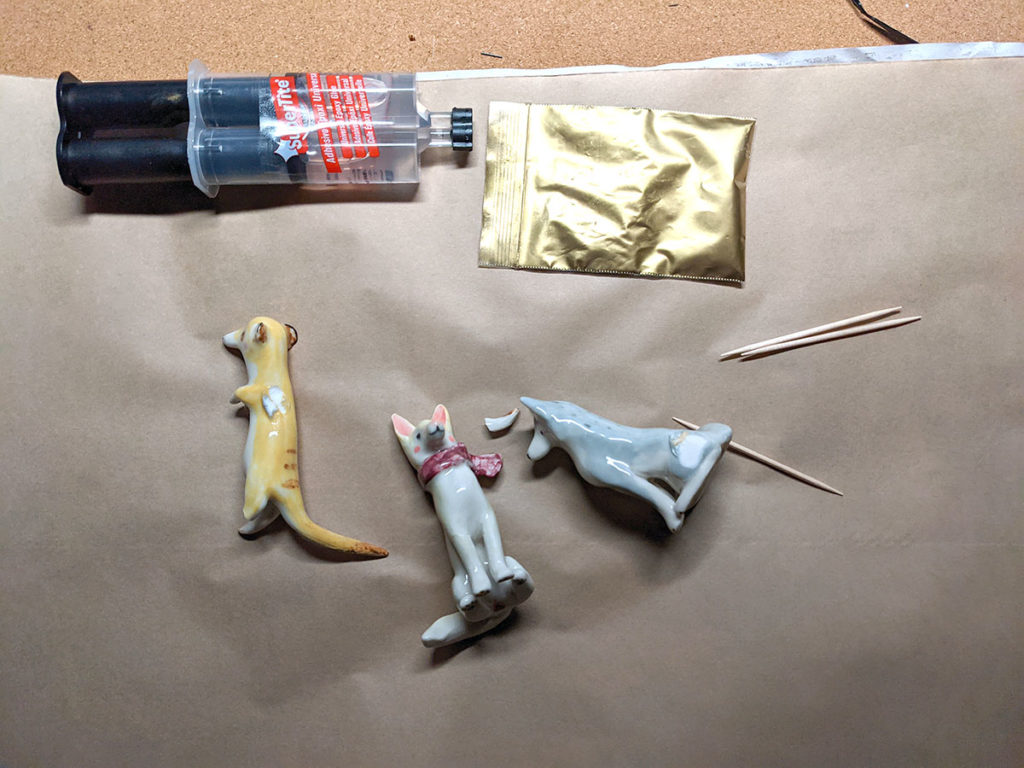
Step 5 : Mixing materials
First I will mix the epoxy glue together and add a pinch of Mica powder to the mix.
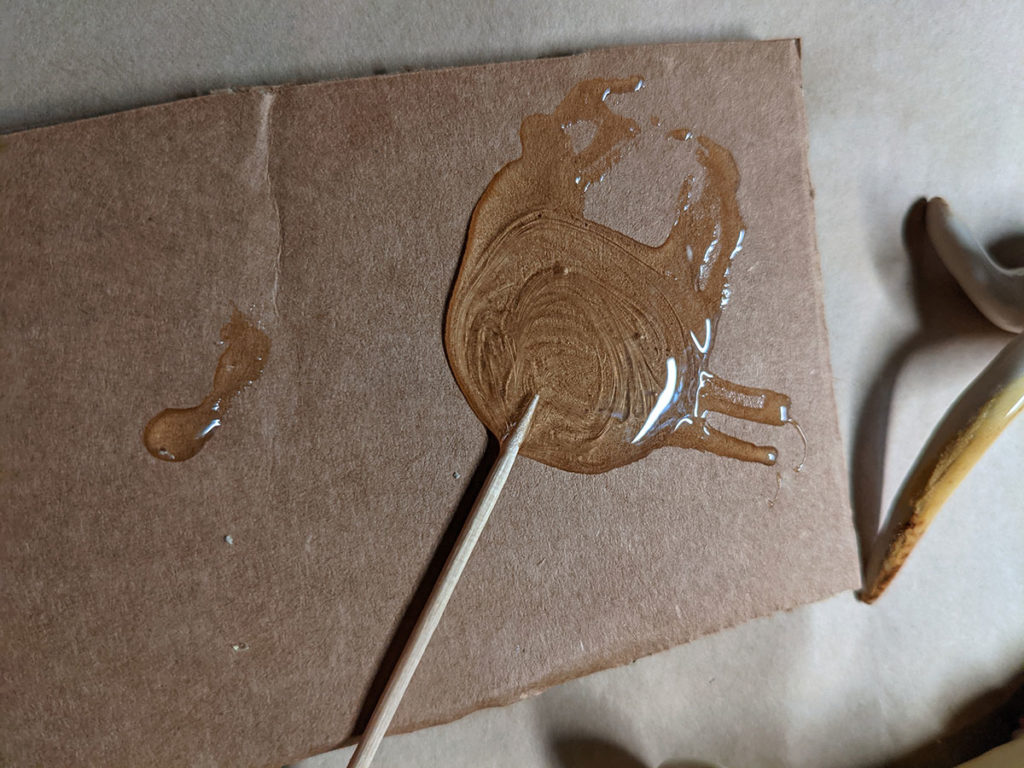
Step 6 : apply the epoxy mix to the figurine
Then you will have to work quickly. Here I had patches to craft and a leg to reattach. The easiest fix were the patches so I attended to them first. I added a tiny amount of the glue + mica to each piece with the toothpick, trying to be as clean as possible.
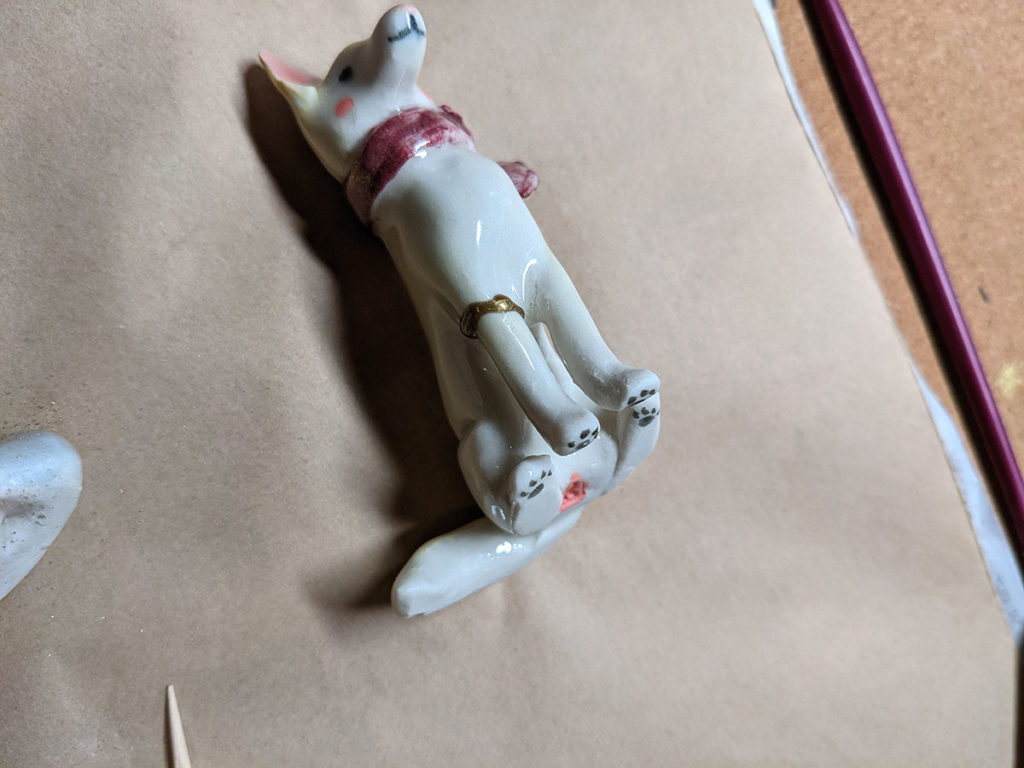
Step 7 : sprinkle mica powder over the fresh resin
While the glue is still fresh, use a brush to lightly sprinkle mica powder over the patch. It will add more shine to your gold repair. Only use the brush with the powder, not the epoxy glue or your brush will be ruined.
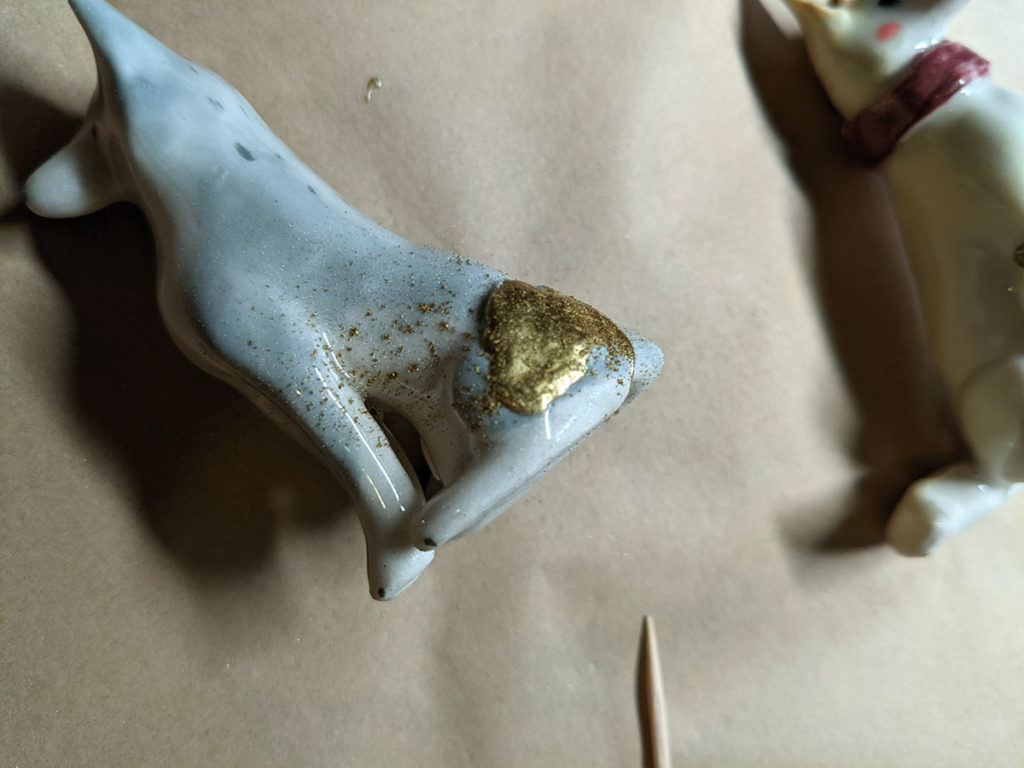
Fixing a porcelain figurine : legs
Once my patches are done, I leave them out to cure and I attend to the most difficult part. This one is a challenge for reasons : it’s a tripod so its balance is very delicate and the leg never really supported the piece because it fell into the kiln and got a bit deformed.
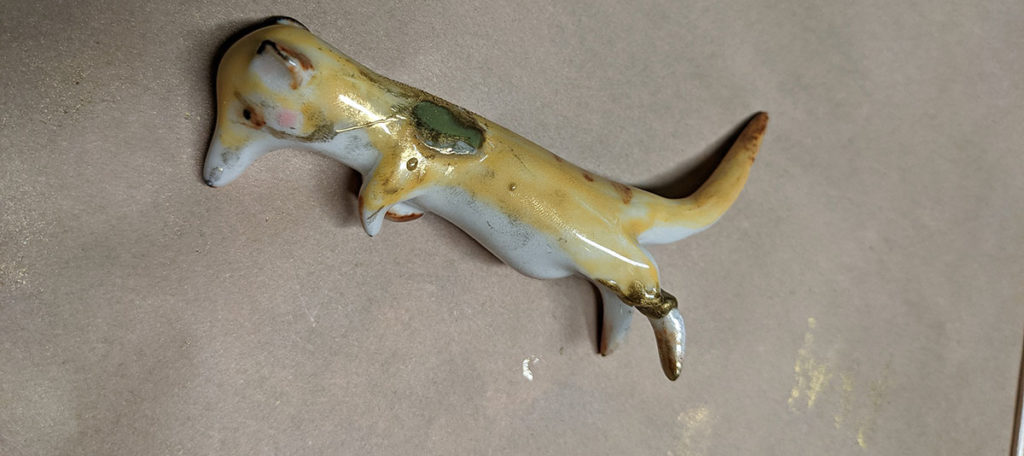
So first I’ll repair the patch where it attached to the wolf. I will try and not put my fingers into the mix (I failed to but was able to clean it).
Then I’ll repair the leg and try and balance the piece. The leg needs a little more glue because the repair surfaces are not fitting perfectly. The first thing is securing the balance and only after it stands will I take care of the visual aspect.
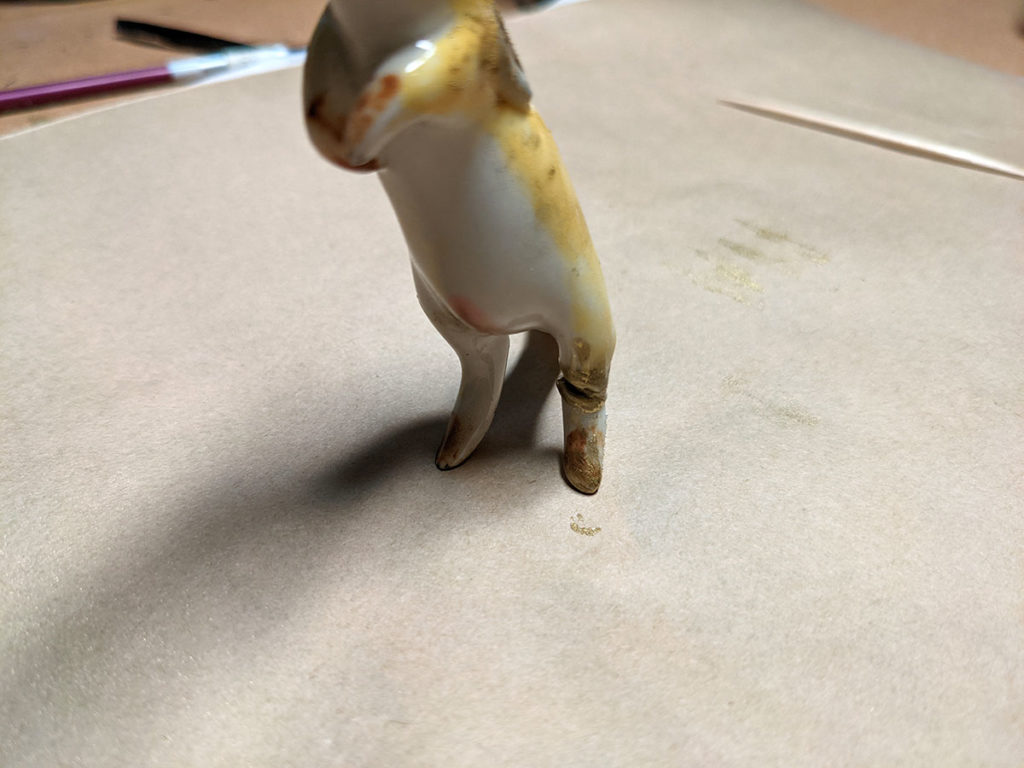
After I fixed the leg, I sprinkle a small amount of mica onto the resin and wait. After a few hours, it’s ready to be cleaned up. If the glue is still a tiny bit sticky to the touch, wait until it’s completely dry. I then wash the figurines with soap and water. I will also scrape any extra resin from the glazed porcelain in order to have the cleanest result possible.
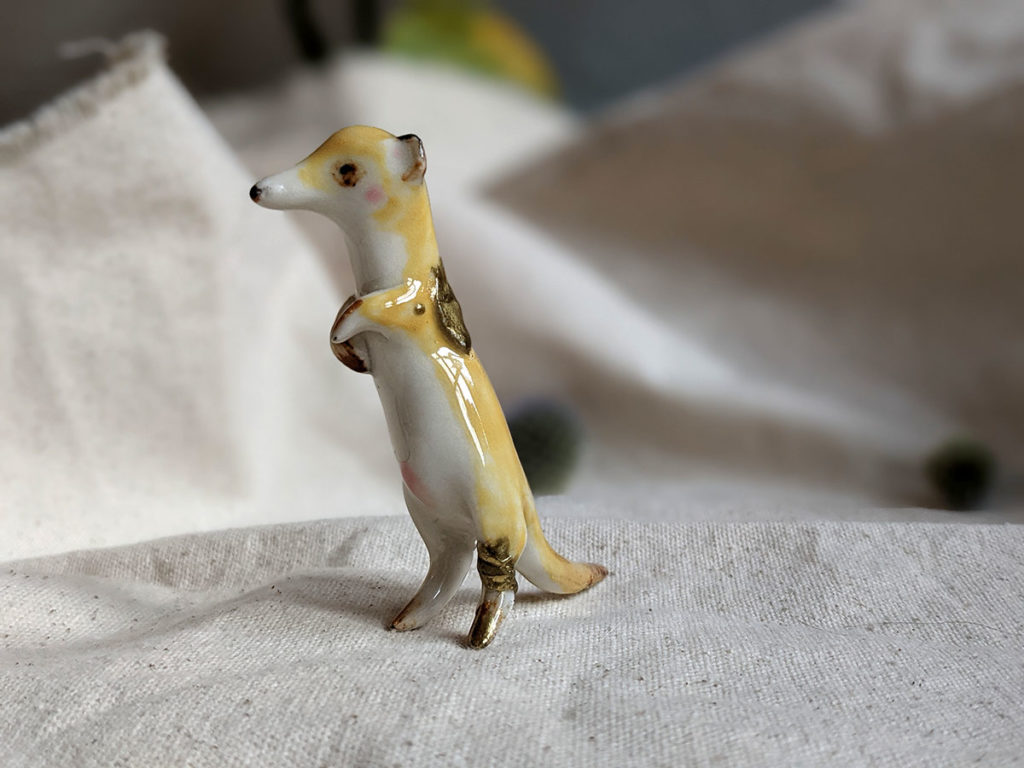
That’s it ! Epoxy is very resistant and sturdy. Your pieces should be good to go for another few years or until the next knock out 😀
Repaired porcelain figurines examples
Here are a few kintsugi style reparation I made on my pieces.
